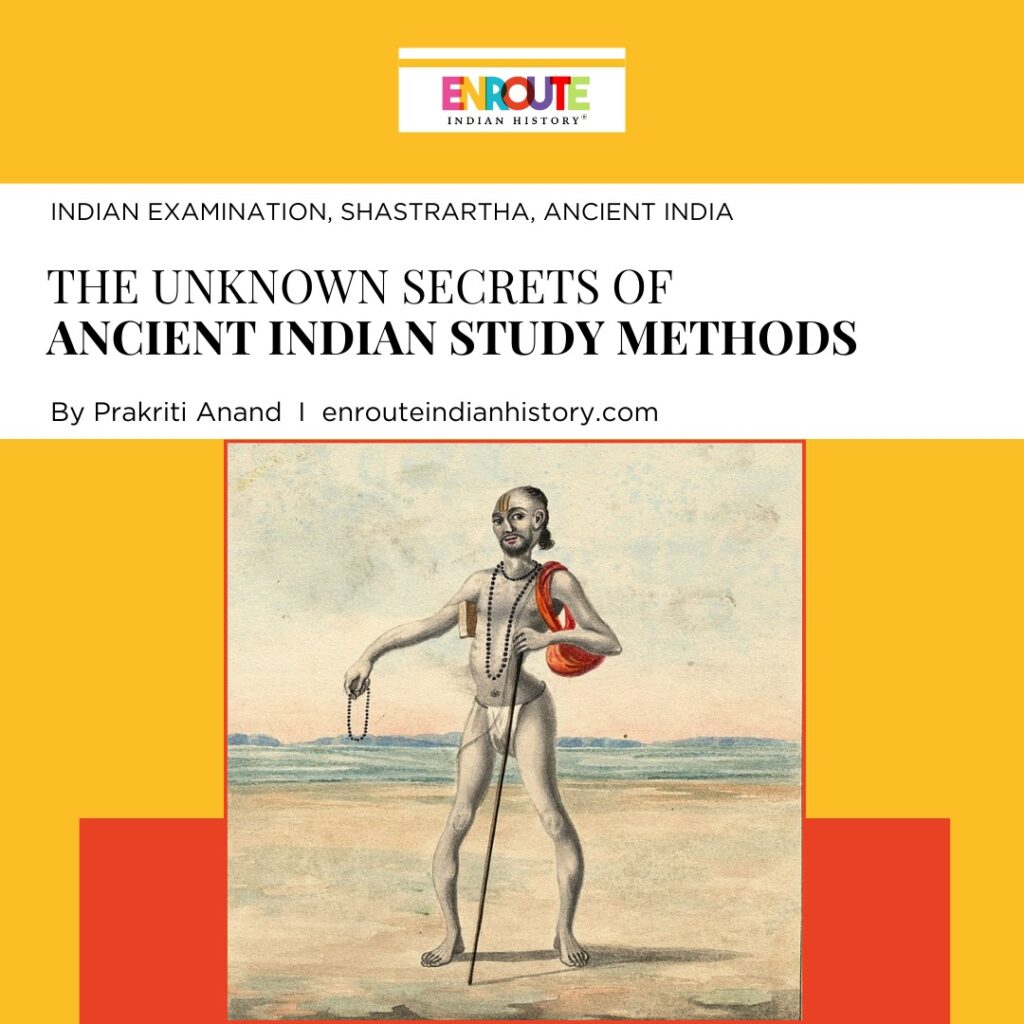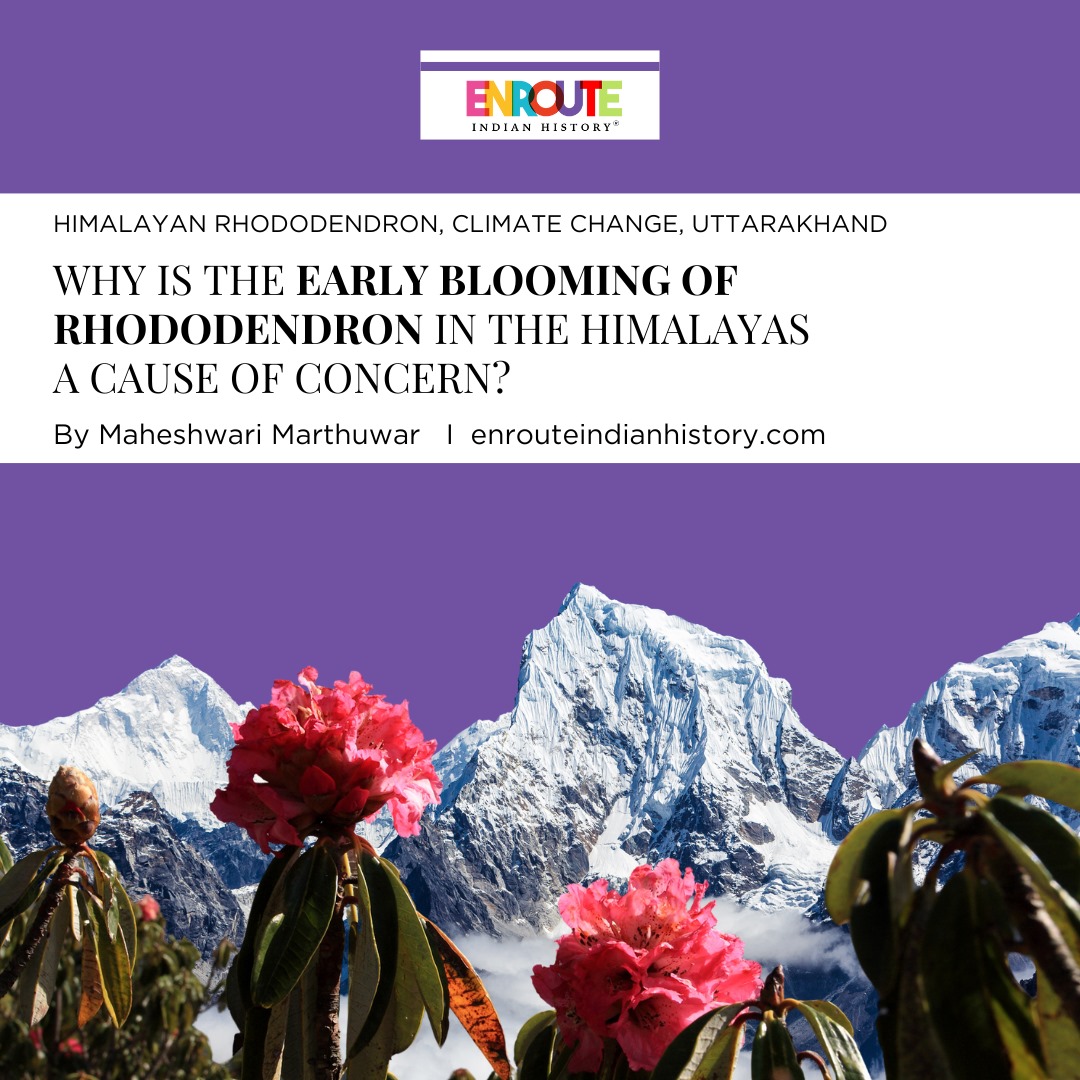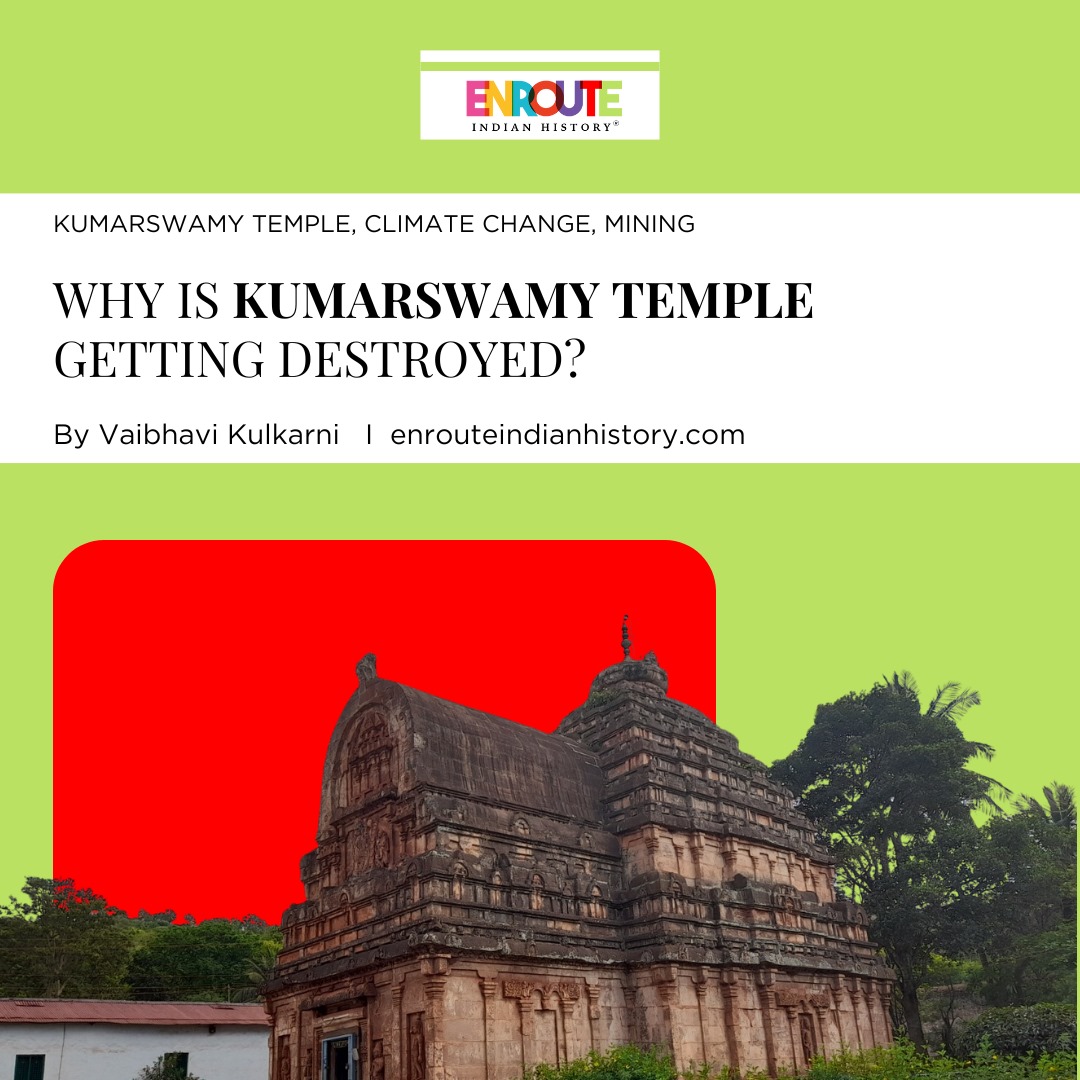The unknown secrets of Ancient Indian study methods.
- enrouteI
- February 22, 2024

Writing his “Argumentative Indian”, a seminal work on the tradition of discourse and public debate in India, the Nobel laureate Amartya Sen masterfully traced the history of discussions and exchange of ideas as a practice of learning from ancient India, where speaking was a skill not unknown to the citizens, who engaged in rich and sometimes incensed debates for days and weeks. This exchange of beliefs has a root in the culture of “Shastrartha”- a discourse on the meaning or artha of shastra or texts, whose mentions can be found in the Upanishads, Puranas, and Vedanta literature. What is intriguing about the popularity of Shastrartha is that it seems to have existed in ancient times as a way of examining the student as well as a test or challenge of intellect of scholar through which they could prove their wit and knowledge. When the syllabus of Gurukul (ancient Indian equivalents of schools) and Vishwavidyala (universities) included elements of sacred and non-religious philosophies of different schools of thought and welcomed students from across the globe, the tradition of Shastrartha presents a unique case study, where a mingling (though limited) of thoughts and beliefs was allowed, between people of different age, gender and social status, which encouraged them to use their Tarka shakti or power of reasoning, a skill that remains relevant even for the modern learners and scholars worldwide. At a time when formal spaces of learning are not available to everyone, the tradition of Shastratha teaches us that a journey towards knowledge can just start anywhere, from a simple question.
Why Argue, and Where?
The process of dialectic in ancient Indian traditions is divided into two categories- constructive and destructive. The first is started with the aim of achieving a solution to a question or to come to a positive conclusion on a matter of philosophies and the other begins with the goal of defeating an opponent in a duel of wits. Individual reasons for dialogues and discourses can be many- acquiring knowledge or satisfying a query, learning through mental churning in a meeting of many learned people, or proving mastery over others. Students often began to learn the art of discourse at an early stage in the Gurukul, where they were tested by their Guru or masters, and once they attained proficiency, they were sent to the outside world, to apply their knowledge. Goshthi– an ancient predecessor to the modern academic conferences, was organized by kingdoms (“Indian Education: Ancient, Medieval and Modern” 2021) and attracted scholars from the world over, who visited the centres and remained there for months, participating in what has been rather humorously termed “Bauddhika nata vidya”- a show of intellectual gymnastics (Devadhar 1984, 9) by some literary traditions.
Purposeful and mannerly arguments are necessary for the development of a heterodox culture in modern times but in the ancient traditions, it was a skill, learned, polished, and exhibited whenever required. The textual sources of this period are abounding with intriguing tales of discourses that happened everywhere- from the humble hermitage of a sage to the royal palace of a sovereign. We will take three of these stories- a) The Samvaad or dialogue between sage Yajnavalkya and his wife Maitreyi, which began with philosophical and metaphysical queries of Maitreyi, b) the discourse of Ashtavakra, the ancient philosopher who saved the life of his father by winning a philosophical duel in the court of king Janaka, c) the discourse between Adi Shankaracharya and Ubhaya Bharati which motivated the ascetic to learn the art of love in order to prove his mastery over all kinds of knowledge. These cases, diverse as they are, include only two “uppermost” groups of the ancient society- Brahmana and Kshatriya, which underlines the limited scope of education, especially in the public sphere. However, these instances become engaging due to their depiction of an established culture of open discussion and questioning as a way of educating self and others. The ability of differing schools of thought to co-exist offers an inspiration for modern educators, learners, and society in general, to take a page from the book of history, and revisit a possibly unique space of life-long learning.
Maitreyi-Yajnvalkya Samvad: Dialogue as a Way of Learning

Yajnavalkya in Conversation with Maitreyi (Source: Rishihood University)
The Brihadaranyaka Upanishad narrate the exchange between sage Yajnavalkya, an ancient authority on philosophy and author of several important works, and his wife Maitreyi, who is also known as “Brahmavadini”- she who has the knowledge of Brahma or the supreme truth. As Yajnavalkya begins his journey into sannyasa or renunciation (the last stage of the ideal life according to ancient Hindu traditions), he approaches his wife, Maitreyi, to take her permission, and tells her that he has divided his wealth between her and Katyayani, the second wife. The learned woman asked him if the wealth she was bestowed with would make her immortal. The answer came as a clear no. Then what was the use of this wealth? Beginning with a question from Maitreyi, the conversation goes into the nature of reality, the role of Aatman (soul), and the supreme truth (Sivakumar 2011). Outside the formal structure of education that we know and follow today, this story of the discourse between the husband and wife presents a distinctive and commendable case of intellectual exchange between life partners, where the willingness to learn something new has no age. It becomes clear that how with a very common yet often overlooked human virtue- curiosity, one can remain a student throughout their lives.
Ashtavakra: A Young Scholar’s Examination in the Court of a King

Ashtavakra, a 19th Century Painting (Source: Wikimedia Commons)
Named “Ashtavakra”- he whose body is crooked (vakra) at eight (ashta) places, the Advaita (non-dualistic) Vedanta philosopher is best known through his work titled- Ashtavakra Gita and his story from the Mahabharata, of defeating the court philosopher of a king named Janaka (not identified clearly with the Janaka of Ramayana). After his father was exiled after his defeat at the hands of the court philosopher, Ashtavakra came to know about it and visited the city of Janaka to challenge the philosopher named Vandi for a Shastrartha. At the mere age of twelve, according to the traditions, Ashtavakra defeated the learned philosopher and earned the life of his father back as a prize of intellectual competition (Nityaswarupananda 2023). Once again, through this tale of Ashtavakra and the victory of his wits, the message that is underlined is- that knowledge and the willingness to master it has nothing to do with age.
Adi Shankaracharya Defeated by a Woman in Shastrartha?

Ubhaya Bharati Debating with Adi Shankaracharya, a scene from a play titled Shankara-Digvijayam (Source: Sathya Sai with Students Blogspot)
Revered by many Vedantic philosophers and Hindus as the master who “reinvigorated” Hinduism and Hindu philosophy, the life story of Adi Shankaracharya is full of journeys made to towns and kingdoms across the Indian subcontinent, participating in public debates with representatives of several sects and philosophical systems. Establishing his mastery over many, Shankaracharya reached the home of Mandan Mishra, a renowned Brahman philosopher. With his astuteness and wisdom, he was able to undermine the knowledgeable Mandan Mishra, whose wife, Ubhaya Bharati, the judge for the competition seeing her husband being defeated, challenged Shankara to debate with her on the subject of Kama or knowledge of romantic and sexual relationships. Being an ascetic who had no links with the material world, Shankara found himself unable to answer the questions of Ubhaya Bharati (VIDYARANYA 2011, 12). Though defeated for a moment, Shankara asked Bharati to allow him to learn the subject of Kama and revisit the debate once he found himself able to answer her questions.
Till this point in the story of the discourse between Adi Shankaracharya, often known as “Jagadaguru” (world master), and Ubhaya Bharati, the detail of interest for us is the presence of a woman in the sphere of public discourse. While Maitreyi’s Samvaad with Yajnavalkya was in the private space of their hermitage in the forest, away from civilization, the interaction of Ubhaya Bharati with a man not directly related to her with the goal of defeating him in the intellectual competition is a more direct and riveting example of Shastrartha. When one observes how Shankaracharya instead of forfeiting the challenge asks for more time to learn and overcome the new intellectual challenge, it underlines the importance of accepting loopholes and gaps in one’s own learning, a virtue that makes for a successful student and fit philosopher.
So how did an ascetic learn the ways of Kama anyway? According to another, lesser-known Sanskrit text, Aamru-Shataka, a treatise on love, romance, and passion, Shankara traveled in search of the answers he was seeking and reached a city, where the king Aamru had recently died. With the help of a technique known as “Parakaya pravesh vidya” or the art of entering another body, Shankara entered the body of the dead sovereign and visited his palace, where in the company of beautiful women, he learned the ways of love and romance, and during his stay in the abode and body of the king, wrote the text (Devadhar 1984). Having perfected the knowledge of Kama, Shankara returned to Ubhaya Bharati and successfully answered her questions, bringing their discourse to an end. As a female philosopher who not only faced Shankaracharya in a duel of intellect but nearly defeated him with her presence of mind, the story of Ubhaya Bharati needs much more and deeper scholarly interaction.
What makes it worth mentioning in this discussion on the ancient Indian knowledge system is the presence of a woman against one of the stalwarts of Hinduism, a long time before the coming of modern democratic discourse. While the modern world moves toward an absolute definition of knowledge, stories like this are a much-needed reminder of the existence of a multitude of knowledge traditions and the role they play in broadening our own mental boundaries. If a renunciate and staunch Hindu like Shankara (even if for the sake of a debate) could make an attempt to learn a knowledge system completely different from his ascetic beliefs, why can not the seemingly different and opposing disciplines and ideologies interact and even unite in the modern times, to come up with a richer, intensive and multidimensional system of knowledge creation?
Towards a Tradition of Lifelong Learning
“Sa Vidya, ya Vimuktaye”- “That which frees is Vidya or knowledge”. This shloka from the Vishnu Purana captures the essence of the ancient tradition of Shastrartha and its value in educating an individual and society. In the modern quest for “truth” and “fact,” the education system for too long has been focused on rote learning and repetition of what has been said previously. The student in such a system is mentally unfree, trapped under the weight of that which is already known. The lesson from the tradition of Shastrartha is a push towards creating spaces of non-violent and respectful argumentations, where venues of learning beyond school, for the rest of one’s life are prepared, people develop skills to go past their comfortable belief systems and tread a path that might lead them to a becoming world citizen, as they employ their reasoning and knowledge in solving problems of material and philosophical nature.
Much like the Manthan or churning of the ocean, by gods and demons, the process of Shastrartha is a combination of push and pull. One person pushes their ideas, as the other tries to pull them into their school of thought. In this lyrical, intellectual oscillation (like the legendary Samudra Manthan), many jewels come out of the depths of minds, gifts of all kinds, with the nectar of wisdom and poison of conflict. But despite the fueled debates and feuds between minds, the point of Shastrartha was to let a Samvaad or conversation begin, which might seem like a simple dialogue between two people or groups, but with the textual tradition that follows the conversation and the numerous commentaries, translations, editions of the texts created over centuries, it becomes a meta-system of knowledge production, transcending time and space, all starting with just one question.
References
Devadhar, Chintaman R., ed. 1984. Amarushatakam. N.p.: Motilal Banarasidas.
“Indian Education: Ancient, Medieval and Modern.” 2021. In Education at the Intersection of Globalization and Technology, edited by Lee Waller and Mercy Kurebwa.
Nityaswarupananda, Swami. 2023. Ashtavakra Gita. N.p.: Prakash Book Depot.
Sharma, Chandradhar. 1952. Dialectic in Buddhism and Vedanta. Banaras: Nand Kishor and Bros.
Sivakumar, Dr. K. 2011. “On Understanding the Maitreyi Section of the Brihadaranyaka Upanisad.” International Journal of Humanities and Social Sciences, 13-16.
VIDYARANYA, SRI. 2011. SRI SHANKARA DIGVIJAYAM. N.p.: SRINGERI SHARADA PEETHAM.
Image Sources:
- Yajnavalkya in Conversation with Maitreyi (Source: Rishihood University), https://rishihood.edu.in/katyayini/
- Ashtavakra, a 19th Century Painting (Source: Wikimedia Commons) https://en.wikipedia.org/wiki/Ashtavakra#/media/File:Ashtavakra.jpg
- Ubhaya Bharati Debating with Adi Shankaracharya, a scene from a play titled Shankara-Digvijayam (Source: Sathya Sai with Students Blogspot) https://sathyasaiwithstudents.blogspot.com/2013/02/shri-adi-shankaracharya-his-life-part-5.html
- May 15, 2024
- 6 Min Read

























